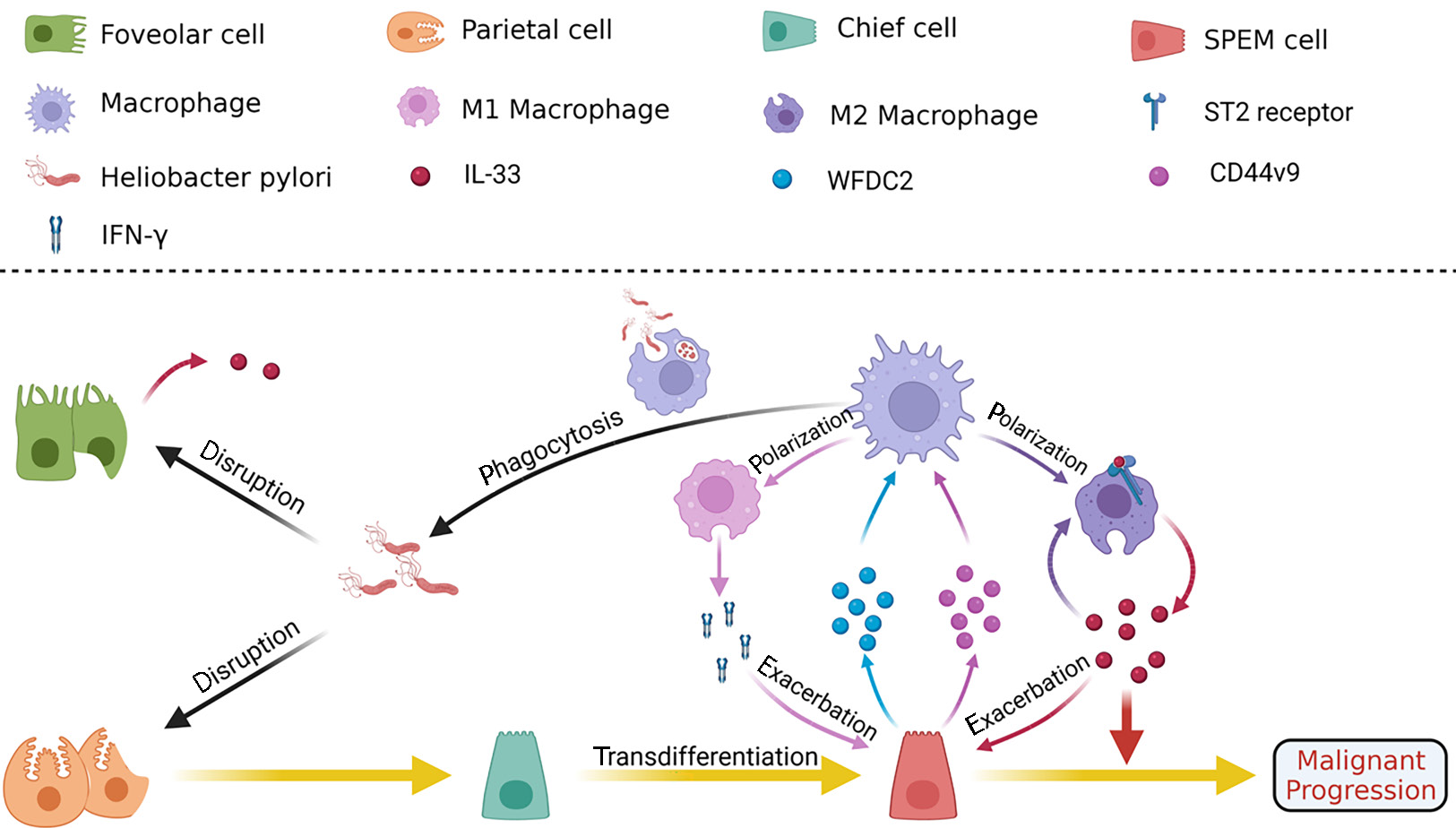Copyright
©The Author(s) 2023.
World J Clin Cases. Jun 6, 2023; 11(16): 3714-3724
Published online Jun 6, 2023. doi: 10.12998/wjcc.v11.i16.3714
Published online Jun 6, 2023. doi: 10.12998/wjcc.v11.i16.3714
Figure 2 Influence of immune cells and cytokines on spasmolytic polypeptide-expressing metaplasia development.
Parietal cells of fundic glands are gradually lost and mature chief cells transdifferentiate into spasmolytic polypeptide-expressing metaplasia (SPEM) in gland bases due to the chronic inflammation caused by Helicobacter pylori infection. In earlier stages, trefoil factor (TFF) 2+/MIST1+ and TFF2+/MIST1- SPEM cells appear at the bases of the same glands. As the inflammation progresses, MIST1 and TFF2 double-positive SPEM cells are gradually replaced by TFF2+/MIST1- cells, in which high expression of CD44V9 and whey acidic protein 4-disulfide core domain protein 2 and macrophage M2 polarization play important roles leading glands to intestinal metaplasia characterized by goblet and Paneth cells. Citation: Created with BioRender.com. (Supplementary material). IFN: Interferon; IL: Interleukin; WFDC: Whey acidic protein 4-disulfide core domain protein 2; CD44v9: CD44 variant isoform 9.
- Citation: Li ML, Hong XX, Zhang WJ, Liang YZ, Cai TT, Xu YF, Pan HF, Kang JY, Guo SJ, Li HW. Helicobacter pylori plays a key role in gastric adenocarcinoma induced by spasmolytic polypeptide-expressing metaplasia. World J Clin Cases 2023; 11(16): 3714-3724
- URL: https://www.wjgnet.com/2307-8960/full/v11/i16/3714.htm
- DOI: https://dx.doi.org/10.12998/wjcc.v11.i16.3714









